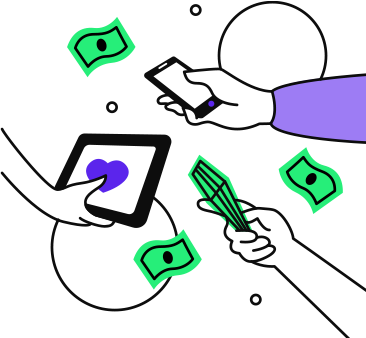If you’re unaware, how much data your iPhone holds is pretty shocking. If you’re not careful, there are risks to your personal information and a threat to your privacy. With the current legal issues between Apple and the FBI, securing user privacy is a hot topic today.
Your iPhone accumulates a lot of metadata about you. These include contacts, locations, spending habits, chats, and search terms. Gathered separately, none of this data is threatening. But when consolidated and cross-referenced, the output turns into quite a lucrative product.
But don’t fret. There are ways how you can secure your privacy on your smartphone. Here are the top recommendations of experts and vendors who sell iPhones.
#1. Set up a secure password.
The application of the fingerprint reader on the iPhone 5s and newer models is a huge step forward. But since there still is a passcode to back it up, the smartphone is only as secure as the password. Today, instead of the traditional four-digit PIN, you can choose an alphanumeric passcode, which is more difficult to hack.
To do this:
- Go to “Settings.”
- Tap “Touch ID & Passcode.”
- Type in your passcode.
- Tap “Change Passcode.”
- Type in your passcode once more.
- Tap “Passcode Options.”
- Choose “Custom Alphanumeric Code.”
- Key in a new password.
#2. Take a look at your privacy settings.
To check your smartphone’s privacy settings, go to Settings and tap “Privacy.” Select and click each of the apps listed to see their privacy status. You’ll likely be surprised at the level of access each app has, many of which are totally pointless or unnecessary.
To revoke their access, move the slider. But remember that some apps require access to your data. For example, if you often use Google Maps, it can only work at its best if you give the app access to read your (and your contacts’) addresses. This can help you easily navigate from point A to point B.
If you revoke an app’s access and later change your mind about it, you can easily move the slider back to revert the process.
#3. Use “Find My iPhone.”
Your iPhone has a valuable feature known as “Find My iPhone.” As the name suggests, it keeps track of your phone should you ever misplace or lose it. You can set your smartphone to generate a loud noise, which comes in handy if you’ve just misplaced it at home. If it’s lost, “Find My Phone” will track its location for you. If it’s stolen, you can also delete your personal data remotely.
To do this:
- Go to “Settings.”
- Tap “iCloud.”
- Choose “Find My iPhone.
#4. Delete your personal data before selling the iPhone.
When you sell your iPhone, make sure to remove all the data BEFORE handing it to its new owner. First, you must log out from iCloud and all linked accounts and remove passcodes. Then, opt to “Erase All Content and Settings” in the Settings app to wipe out everything on your smartphone. So do it once you’ve transferred all your data to your new phone.
To do this:
- Go to “Settings.”
- Click “General.”
- Choose “Reset.”
- Tap “Erase All Content and Settings.”
Take the time to secure your iPhone. It will save you from a headache should something bad happen to it.










